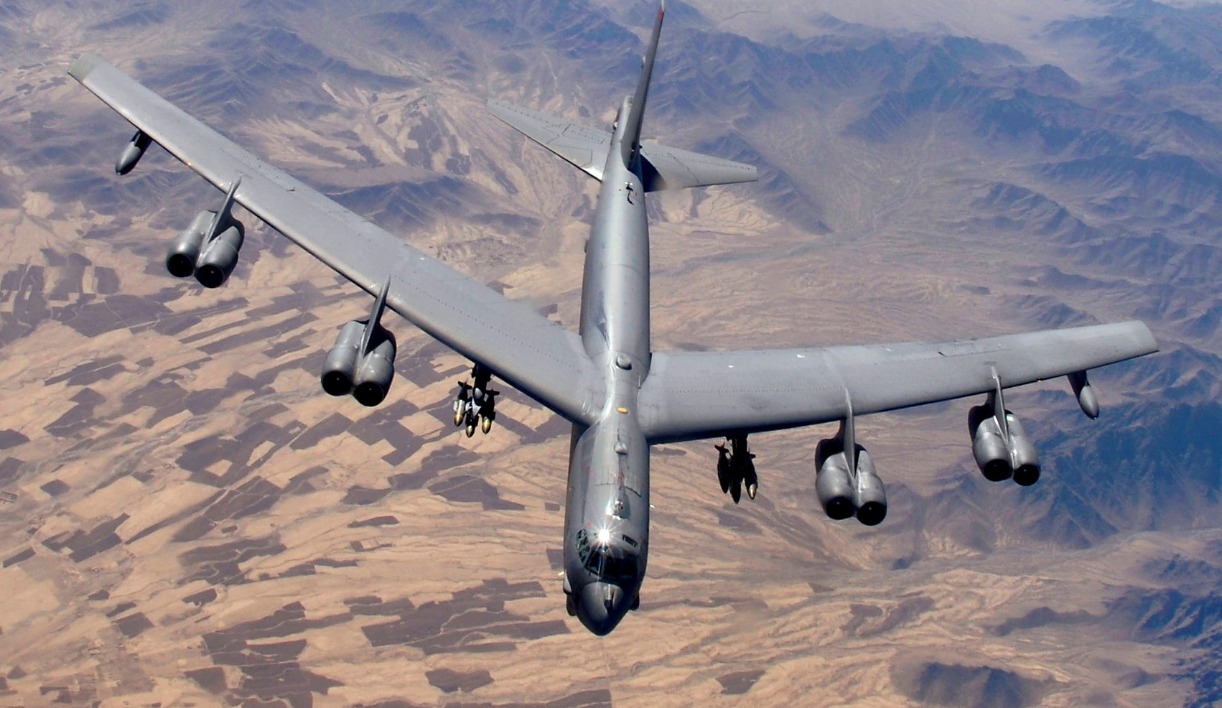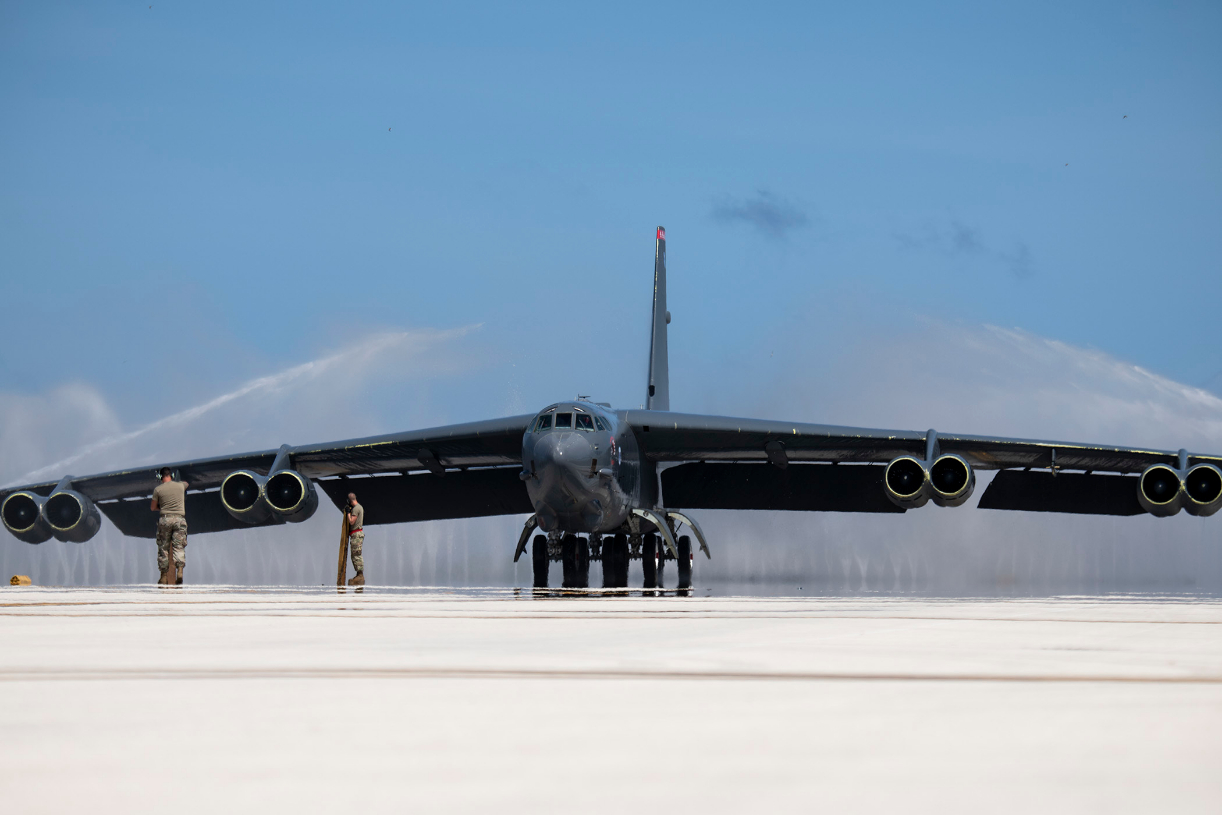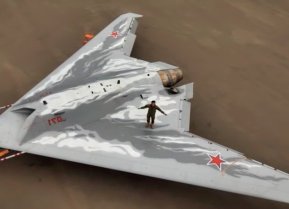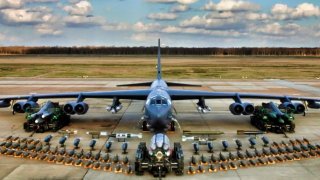B-52: Is It Time for This Old Bomber to Retire?
The B-52 first entered service in the early 1950s, and it is now being flown by crews that likely are young enough to be the grandchildren of the first aircrews.
Is it time for the B-52 Bomber to retire? Not by a Long Shot! - In November 2023, the United States Air Force's future bomber took its maiden flight after being officially "unveiled" just under a year earlier. The Northrop Grumman B-21 Raider is set to enter service by the end of the decade.
The Raider was developed to be the multifunctional backbone of the modernized bomber fleet, gradually replacing the aging Rockwell B-1 Lancer and B-2 Spirit bombers now in service. A dual-capable penetrating strike stealth aircraft, the B-21 will be capable of delivering both conventional and nuclear munitions.
The U.S. Air Force plans to buy at least 100 of the aircraft, which as noted will replace the Lancer and Spirit bombers; while the B-21 Raider will operate alongside the Boeing B-52 Stratofortress in the coming decades. The service has called for a two-bomber fleet that will consist of the B-21 Raider with upgraded B-52s. Though the Stratofortress is older than the B-1 and B-2, those aircraft were pushed hard during conflicts following the Cold War including in Afghanistan and Iraq.
Is the B-52 Past Its Prime?
The B-52 first entered service in the early 1950s, and it is now being flown by crews that likely are young enough to be the grandchildren of the first aircrews. The backbone of the United States Air Force's bomber fleet today is an aircraft that entered service when "The $64,000 Question" was America's top-rated TV show – so how is that for a quiz show question?
In fact, the long-range strategic bomber first took flight at a time when fewer than half of Americans had a TV set. More importantly, by the time the bombers are finally retired, which is now scheduled for sometime in the 2050s, the B-52 will have been in service for around a century.
By the time it retires in the late 2040s or early 2050s, the last B-52s could be operated by the great-grandchildren of those who were originally at the controls.
How Does It Keep Flying?
It isn't hard to imagine how an aircraft that entered service in the 1950s is still flying – there are plenty of vintage aircraft that make the rounds at air shows across the country. But the B-52 remains in operational service and is able to carry out combat missions around the globe!
Part of the longevity is that the Air Force has carefully maintained its fleet, which has gotten considerably smaller over time.
Though 744 were built, with the final aircraft being delivered in October in 1962, there are currently 76 in the United States Air Force's inventory. Of those 58 are active with the 2nd Bomb Wing and 5th Bomb Wing, while 18 more are in reserve with the 307th Bomb Wing. Another dozen are in long-term storage at the Davis-Monthan Air Force Base (AFB) "Boneyard."
Its operational capabilities have been adapted over the past seven decades to meet changing defense needs. This included modifications for low-level flight, conventional bombing, and extended-range flights. The current fleet of B-52s can launch ballistic and cruise missiles hundreds of miles from their targets, and there have been efforts to develop hypersonic weapons that can be employed with the bombers.
Efforts are now underway to swap out the original Pratt & Whitney TF-33 engines for new Rolls Royce F130 engines. Another equally important update to the B-52 fleet is taking place.
The first Stratofortress from the 307th Bomb Wing arrived at a Boeing Co., facility in San Antonio in late May to begin receiving the Active Electronically Scanned Array (AESA) AN/APG-79 radar, as part of the Air Force's B-52 Radar Modernization Program. The installation of AESA will be one of the largest upgrades to the B-52 in the history of the fleet, and the total effort to modernize the Cold War bombers will reportedly cost around $2.8 billion, with initial operational capability expected in 2027.
The AESA system will offer increased situational awareness and navigation and targeting ability, while it was also designed to be adaptable, which will allow for new capabilities to address future threats to be added via software modifications. Boeing and Raytheon are now both heavily involved in the installation process of the AESA.
There have been several other upgrades in recent years, including a privacy screen for the aircraft's lavatory, but the latest upgrades have been seen as so significant that it has warranted a redesignation of the aircraft.

Enter the B-52J
The new B-52J designation will come as the result of the new commercial engines and associated subsystems, the Air Force announced in justification documents for its 2024 budget request. Yet, that has led to some confusion as some of the bombers have already received the installation of Raytheon's AESA AN/APG-79 radar, along with new navigation and communication systems.

This would mean that some B-52Js have the new radar but not the engines.
There was speculation the engine upgrade would, therefore, call for the B-52K designation, but the Air Force is sticking with the J designation – at least for now.
With these improvements, the B-52 will keep flying until the 2040s and perhaps even longer.
Author Experience and Expertise
Peter Suciu is a Michigan-based writer. He has contributed to more than four dozen magazines, newspapers, and websites with over 3,200 published pieces over a twenty-year career in journalism. He regularly writes about military hardware, firearms history, cybersecurity, politics, and international affairs. Peter is also a Contributing Writer for Forbes and Clearance Jobs. You can follow him on Twitter: @PeterSuciu.


